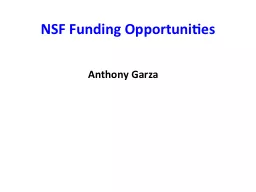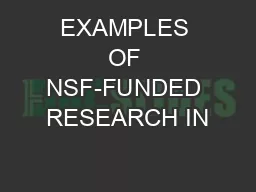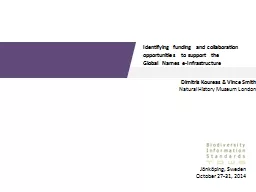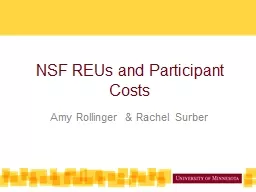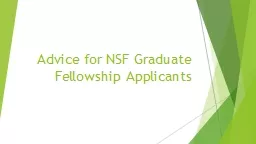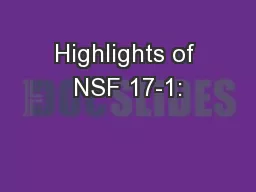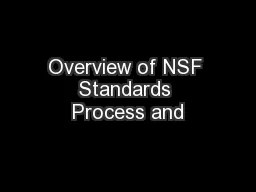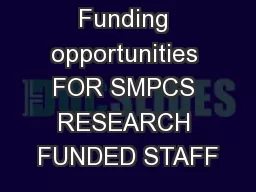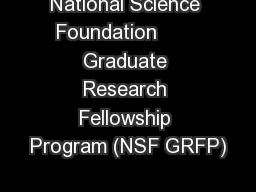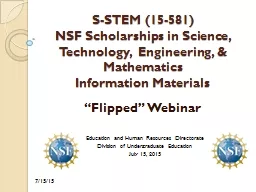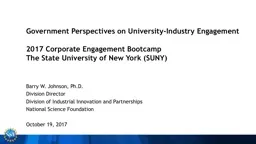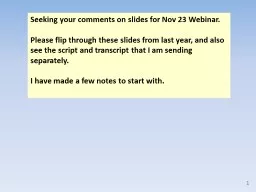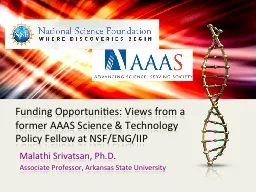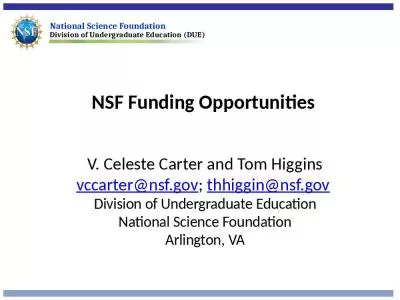PPT-NSF Funding Opportunities
Author : conchita-marotz | Published Date : 2017-07-30
Anthony Garza General Funding Opportunities Standard proposals or investigator initiated research projects submission once or twice a year depending on the directorate
Presentation Embed Code
Download Presentation
Download Presentation The PPT/PDF document "NSF Funding Opportunities" is the property of its rightful owner. Permission is granted to download and print the materials on this website for personal, non-commercial use only, and to display it on your personal computer provided you do not modify the materials and that you retain all copyright notices contained in the materials. By downloading content from our website, you accept the terms of this agreement.
NSF Funding Opportunities: Transcript
Download Rules Of Document
"NSF Funding Opportunities"The content belongs to its owner. You may download and print it for personal use, without modification, and keep all copyright notices. By downloading, you agree to these terms.
Related Documents

